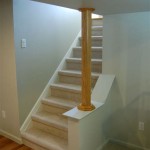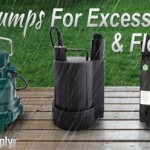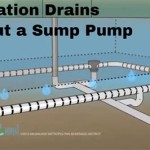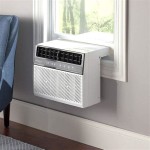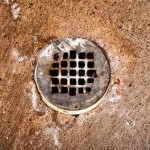Best Waterproofing Products For Basement Walls
A damp or leaky basement can lead to significant problems, including structural damage, mold growth, and reduced indoor air quality. Effectively waterproofing basement walls is crucial to protecting a home and maintaining a healthy living environment. Selecting the appropriate waterproofing products is essential for long-term success. This article explores several leading waterproofing products available for basement walls, detailing their applications and benefits.
Understanding Basement Waterproofing Needs
Before selecting waterproofing products, accurately assessing the specific needs of the basement is paramount. Factors such as the type of foundation (concrete block, poured concrete, or stone), the severity and source of moisture intrusion, and the local climate will influence the choice of products. A thorough inspection should identify cracks, porous areas, and potential points of water entry. Analyzing these factors will inform the selection of the most effective waterproofing solutions.
The level of waterproofing required also varies. Light dampness might be addressed with a simple sealant, whereas more severe leaks necessitate a more comprehensive approach involving multiple layers of protection and potentially external solutions. Understanding the existing drainage systems around the foundation, such as gutters and downspouts, is also crucial. Ensuring proper drainage helps minimize hydrostatic pressure against the basement walls.
Furthermore, consider the long-term use of the basement. A basement intended for living space requires a higher degree of waterproofing than one used solely for storage. This decision will directly impact the level of investment and the complexity of the waterproofing system.
Interior Waterproofing Options
Interior waterproofing focuses on preventing water from entering the living space from the inside. While it doesn't address the source of the water intrusion, it can effectively manage moisture and prevent damage. Several products are suitable for interior basement wall waterproofing.
Waterproof Paint: Waterproof paint, often referred to as masonry paint, is a thick, latex-based coating designed to create a water-resistant barrier on concrete and masonry walls. It's typically applied in multiple coats and is effective in preventing minor dampness and water seepage. However, waterproof paint alone is not a solution for significant leaks or hydrostatic pressure. It's best suited for basements with low levels of moisture and as a preventative measure rather than a primary waterproofing defense.
When applying waterproof paint, meticulous surface preparation is crucial. Remove any loose paint, efflorescence (salt deposits), or dirt. Patch any cracks or holes with hydraulic cement. Apply the paint evenly, following the manufacturer's instructions regarding the number of coats and drying time. Consider using a paint that contains mold and mildew inhibitors for added protection.
Concrete Sealers: Concrete sealers penetrate the porous surface of concrete to create a water-repellent barrier. There are two main types: penetrating sealers and membrane-forming sealers. Penetrating sealers, such as silane and siloxane-based sealers, react with the concrete to create a hydrophobic layer within the pores. Membrane-forming sealers create a protective film on the surface of the concrete. Penetrating sealers are generally preferred for basement walls because they allow the concrete to breathe, reducing the risk of moisture buildup behind the sealant.
The application of concrete sealers typically involves cleaning the surface thoroughly and applying the sealer with a brush, roller, or sprayer. The manufacturer's instructions should be followed carefully to ensure proper penetration and coverage. Consider applying multiple coats for enhanced protection, especially in areas prone to moisture intrusion.
Waterproofing Membranes: Waterproofing membranes are flexible sheets of material, typically made of rubber or plastic, that are applied to the interior of the basement walls to create a watertight barrier. These membranes can be applied using adhesives or mechanical fasteners. They are effective in preventing water from entering the basement, even under significant hydrostatic pressure. Waterproofing membranes are a more robust solution than waterproof paint or concrete sealers and are suitable for basements with moderate to severe water problems.
Installation of waterproofing membranes requires careful attention to detail. The surface must be clean, dry, and free of any sharp objects that could puncture the membrane. Overlap the seams of the membrane to ensure a continuous watertight barrier. Seal the edges of the membrane with sealant to prevent water from seeping behind it. Consider installing a drainage system behind the membrane to collect and redirect any water that might accumulate.
Interior French Drains: While not a wall treatment in itself, an interior French drain is an integral part of an interior waterproofing system. It's a drainage system installed along the perimeter of the basement floor, collecting water that seeps in through the walls or floor and redirecting it to a sump pump. The sump pump then discharges the water away from the foundation.
The installation of an interior French drain involves excavating a trench along the perimeter of the basement, installing perforated drainage pipe, and backfilling the trench with gravel. The system is typically covered with a layer of concrete to create a finished floor. An interior French drain is an effective solution for managing water that enters the basement and is often used in conjunction with waterproofing membranes or sealers.
Exterior Waterproofing Options
Exterior waterproofing involves preventing water from reaching the foundation walls in the first place. This approach is generally more effective than interior waterproofing because it addresses the source of the problem rather than just managing the symptoms. However, it is also more invasive and expensive, as it typically requires excavating around the foundation.
Exterior Waterproofing Membranes: These are similar to interior waterproofing membranes but are designed to withstand the harsh conditions of the soil. They are typically made of rubberized asphalt or other durable materials. They are applied to the exterior foundation walls to create a watertight barrier.
The installation of exterior waterproofing membranes requires excavating around the foundation to expose the walls. The walls are then cleaned and prepared, and the membrane is applied. The seams of the membrane are carefully sealed to prevent water from seeping in. A protective layer of drainage board is often installed over the membrane to protect it from damage during backfilling.
Exterior Drainage Systems: An exterior drainage system is a network of perforated pipes installed around the foundation to collect and redirect groundwater away from the walls. This system typically includes a gravel bed to facilitate drainage and a filter fabric to prevent soil from clogging the pipes.
The installation of an exterior drainage system involves excavating around the foundation, installing the drainage pipes, and backfilling the trench with gravel. The pipes are typically sloped to allow water to flow to a discharge point, such as a storm sewer or a dry well. An exterior drainage system is an effective solution for preventing hydrostatic pressure against the foundation walls.
Clay Soil Management: Clay soil expands when wet and contracts when dry, which can exert significant pressure on foundation walls. Managing clay soil around the foundation is crucial for preventing water problems. This can involve replacing the clay soil with a more well-draining material, such as gravel or sand. It can also involve installing a drainage system to remove water from the clay soil.
Another approach to managing clay soil is to create a positive slope away from the foundation. This will help to prevent water from pooling around the foundation walls. Gutters and downspouts should also be properly maintained to ensure that rainwater is directed away from the foundation.
Choosing the Right Product and Professional Installation
Selecting the right waterproofing product requires careful consideration of the specific needs of the basement, the severity of the water problem, and the budget. It is often beneficial to consult with a professional waterproofing contractor to assess the situation and recommend the most appropriate solutions. A professional contractor can identify hidden problems, such as cracks or porous areas, and ensure that the waterproofing system is installed correctly.
Regardless of which product is selected, proper installation is essential for long-term success. Follow the manufacturer's instructions carefully and pay attention to detail. Ensure that the surface is properly prepared before applying any waterproofing materials. Seal all seams and edges to prevent water from seeping in. Consider hiring a professional contractor for complex installations, such as waterproofing membranes or drainage systems.
Maintaining the waterproofing system is also crucial. Regularly inspect the basement for signs of moisture or leaks. Clean gutters and downspouts to ensure proper drainage. Address any problems promptly to prevent them from escalating. With proper selection, installation, and maintenance, basement waterproofing can protect a home from water damage and create a healthy and comfortable living environment.

Best Basement Waterproofing Methods Ecobuild Plus

Best Basement Waterproofing Products

Advances In Spray Applied Basement Coatings Waterproof Magazine

Kilz Basement Masonry Waterproofer

What Are The Best Basement Waterproofing Products

How To Waterproof Basement Walls With Flex Seal Products

Waterproofing Basement Floor Slabs And Walls Waterproof Magazine

Foundation Waterproofing How To Waterproof Walls

Top Basement Waterproofing Methods Products Asian Paints

Dampproofing And Waterproofing For Foundation Walls Fine Homebuilding
